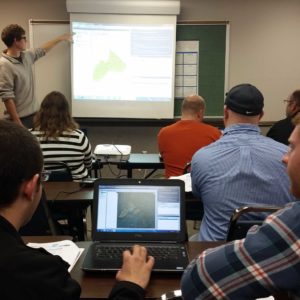Yellow Medicine Project - One Watershed One Plan
Guiding southwest Minnesota partners to develop the next generation of watershed planning for the Yellow Medicine River.
The Yellow Medicine River, a tributary of the Minnesota River, spans 107 miles as part of the Mississippi River Watershed. Located in southwestern Minnesota, the land in the Yellow Medicine area is primarily used for growing corn and soybeans. As a part of the Yellow Medicine Project, RESPEC successfully met the challenges of facilitating a diverse group of stakeholders and developing a new watershed plan that addressed the major differences between political boundaries and watershed boundaries.
RESPEC’s professional team led local government, citizens, and state agencies to address problems from a previous water and natural resource plan. The plans goals were refocused to areas defined naturally instead of problematic political boundaries. In a pilot effort to restore the Yellow Medicine River Watershed, RESPEC led the mission to prioritize projects that maximize benefits and conserve budget.
The new plan primarily focuses on the area that drains into the Yellow Medicine River and its tributaries. Before RESPEC’s involvement, natural-resource planning was based on city, township, and county lines. Determining best management practices was difficult because the watershed boundary crossed municipal stakeholder lines. RESPEC used a blend of science, engineering, logic, and public outreach to demonstrate that land and river boundaries defined by nature would yield the most cost-effective results.
With the new watershed plan, stakeholders have access to a new optimization tool developed by RESPEC called the Scenario Application Manager (SAM). SAM allows users to try different combinations of best management practices and land-use changes to see impacts on flooding and water quality before actual design work begins. For example, SAM can help users determine whether or not the addition of cover crops to one area of the watershed will have more impact per dollar than riverbank stabilization. SAM helps provide a fully optimized watershed plan that is more attractive to funding agencies. Carefully planned projects that have been studied for their potential to address resource concerns have a greater chance of being funded.




Stay in Touch